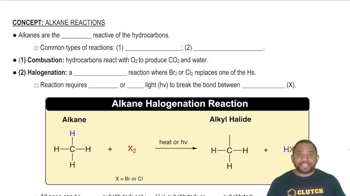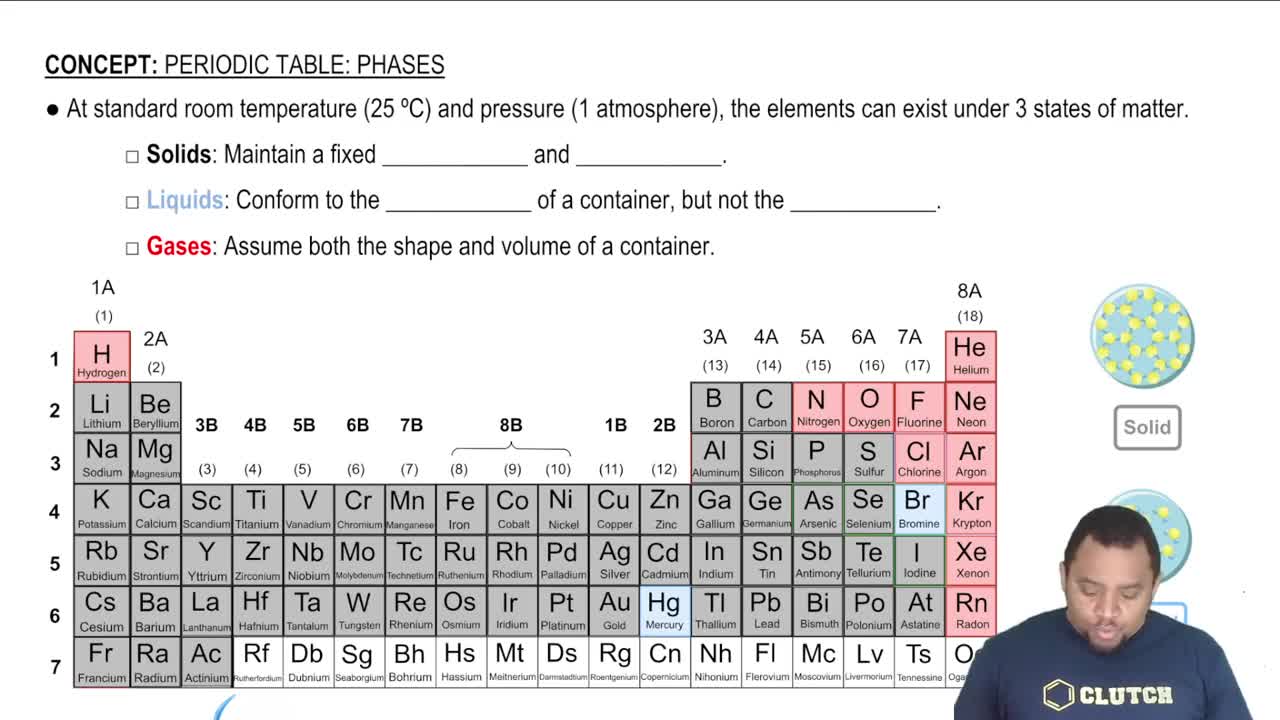Write the balanced chemical equation for each reaction.
c. Sulfur dioxide gas reacts with oxygen gas to form sulfur trioxide gas.
d. Gaseous ammonia (NH3) reacts with gaseous oxygen to form gaseous nitrogen monoxide and gaseous water.

 Verified step by step guidance
Verified step by step guidance



Write the balanced chemical equation for each reaction.
c. Sulfur dioxide gas reacts with oxygen gas to form sulfur trioxide gas.
d. Gaseous ammonia (NH3) reacts with gaseous oxygen to form gaseous nitrogen monoxide and gaseous water.
Write the balanced chemical equation for the reaction of aqueous potassium hydroxide with aqueous iron(III) chloride to form solid iron(III) hydroxide and aqueous potassium chloride.
Consider the unbalanced equation for the neutralization of acetic acid: HC2H3O2(aq) + Ba(OH)2(aq) → H2O(l) + Ba(C2H3O2)2(aq) Balance the equation and determine how many moles of Ba(OH)2 are required to completely neutralize 0.461 mole of HC2H3O2.
Calculate how many moles of NO2 form when each quantity of reactant completely reacts. 2 N2O5( g) → 4 NO2(g) + O2(g) a. 2.5 mol N2O5
Calculate how many moles of NH3 form when each quantity of reactant completely reacts. 3 N2H4(l) → 4 NH3(g) + N2(g) c. 65.3 g N2H4